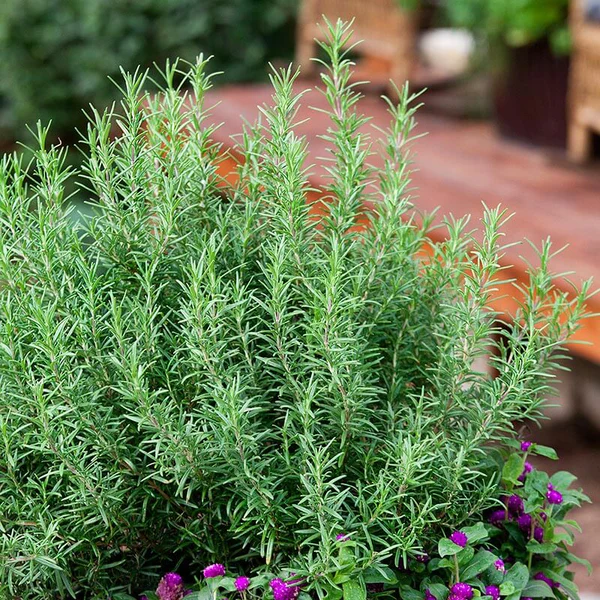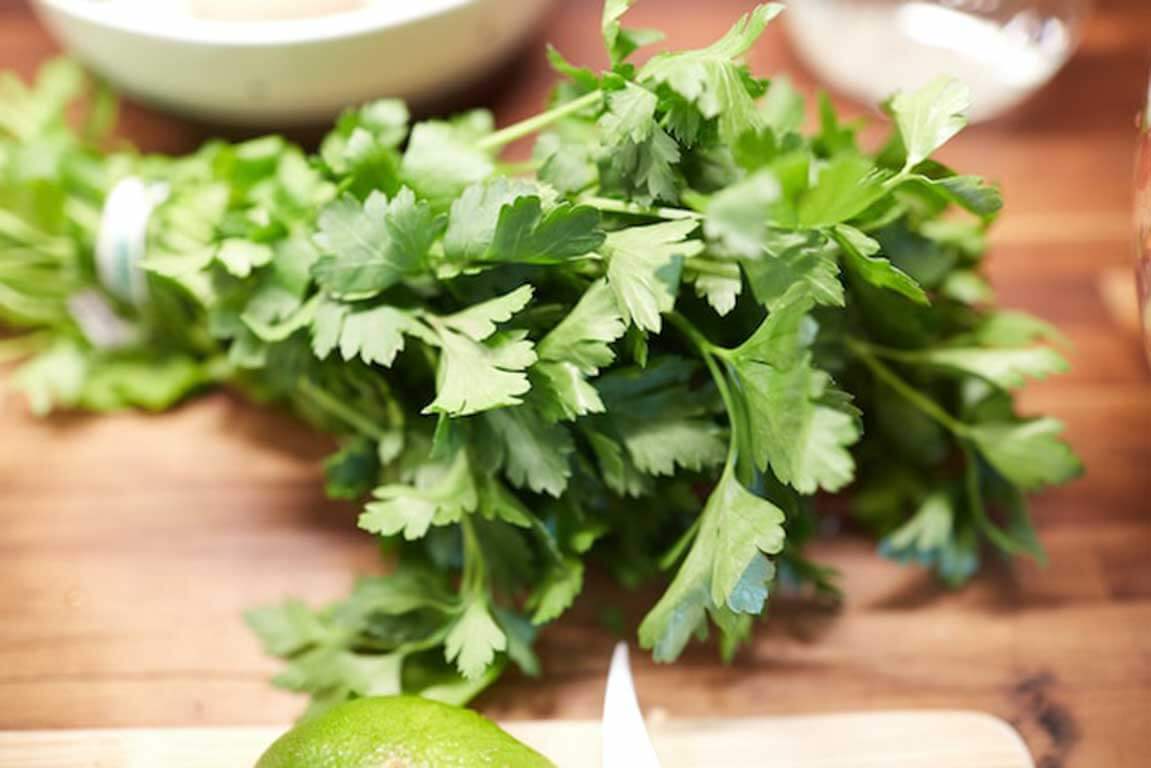
Fresh Rosemary in Our Garden
Parsley, Sage, Rosemary, and Epazote – Cooking with Obscure Culinary Herbs
When we owned and operated Beechwood Inn we would love to surprise our guests with interesting exotic flavors with which they may not be familiar. Gayle and I are still looking for ways to differentiate our dining experience – and one way to do that is to add new flavors. Having one thing on our menu that we can get but other chefs can’t makes dining with us a “unique” experience.
I recall being introduced to eating the fresh shoots of a fir tree. I have crushed them and smelled them all my life, but it never entered my mind to eat them. An herbalist friend of ours instructed that they were perfectly edible and sustainable. You could make a lovely tea and they were filled with vitamins. The flavor is green and citrusy with and it is totally recognizable and it is delicious.
Many of the herbs we use we grow ourselves. They just taste better coming fresh from our gardens – and they are less expensive than buying small jars of grocery store herbs at $10 an ounce. Herbs are pretty easy to grow and they do not require a lot of real estate. They are perfectly happy in a crowded window box as they are spreading across a field. We have many raised beds in sunny locations and we plant our herbs along the edges of our vegetables. Some herbs help repel insects
One of our favorite nearby sources for rare herbs (as well as heirloom vegetables) is Winding Stair Nursery in Franklin. Each year we buy from them enough lemon verbena to plant a hedge. It is s one of my favorite herbs with which to make ice cream and sorbets. Another great herb for flavoring ice cream is roasted and powdered dandelion root. The flavor is reminiscent of mild coffee or chocolate. Again, it’s unique. And, of course, dandelions are easy to find and seem to be completely sustainable, at least in our yard.
We have several huge lovage plants, which turns out to be a wonderful perennial. Lovage is great in soups and stews. Its flavor profile is something similar to celery.
We plant a large variety of basil in different colors and flavors. One of my favorites is Thai Basil. Thai Basil is a type of sweet basil native to Southeast Asia that has been cultivated to provide distinctive traits. Its flavor is more stable under high or extended cooking temperatures than that of Genovese. Thai basil exhibits small, narrow leaves and purple stems, with a mauve (pink-purple) flower. The taste and aromatics are of licorice. We use it in fresh spring rolls, in salads and to flavor seafood. I will soak several stems in water, lay a bed of the stems on the grill and spread a layer of shrimp on the Thai Basil. Cook until the shrimp turns pink and then flip. It is an evocative flavor.
Another spice we gather is sumac. In the late summer sumac flowers turn bright red to sienna brown. The berries can be ground into a crimson spice that tastes lemony and a bit tart. It is used in lots of Middle Eastern foods. We sprinkle it on meats, rice and polenta.
Our friend, Peggy McBride blends and shares with us Hawaiian Lihimui Spice made from rare herbs she gets on her regular visits to Hawaii. It is sweetly spicy and tart with a hint of salt. It is great on fruit like pineapple, fresh peaches and apples. It goes great on crème bruleè. I also sprinkle it on popcorn.
Another spice condiment we make is harissa. It is a Tunisian hot chili sauce whose main ingredients are piri piri (a type of chili pepper). We substitute local hot Osage peppers and mix them with spices and herbs such as garlic paste, coriander seed, red chili powder, caraway as well as some olive oil. You often see harissa on hummus for a spicy flavor. We use it on couscous, shrimp and lamb and of course on our house-made hummus.
Another herb we grow is papalo. It was introduced to me by a Hispanic worker. Papalo has a very unique flavor that has been described as tasting like a mixture of cilantro, arugula and mint. I refer to it as cilantro on steroids. The leaves of the plant have oil glands that produce chemicals used to deter insects, which is the reason behind the very distinct smell and flavor of papalo. It is hardier than cilantro which is quick to bolt in hot weather. We use it in salsas and in Gazpacho as you would cilantro.
That same worker also introduced us to epazote. Raw, it has a resinous, medicinal pungency, similar to anise, fennel, or even tarragon, but stronger. Its fragrance is strong but difficult to describe. Some compare its aroma to turpentine or creosote. Although it is traditionally used with black beans for flavor and its anti-flatulent properties (less gas), it is also used to flavor other traditional Mexican dishes as well such as quesadillas, mole, tamales, chilaquiles, and enchiladas. Try it sparingly at first.
We often grow a large plot of borage, which is used as a fresh herb and as a dried herb. The fresh leaves and stems have a cucumber like flavor that we include in salads. The pretty blue and lavender flowers taste like honey and make lovely garnishes on Gayle’s desserts.
We grow some herbs just for their beauty like blood veined sorrel. Many people are not familiar with it, so its beauty is quite startling. It has a nice sour taste like most sorrel and it makes a spectacular presentation on a plate. We will use the leaves to lay under something like chicken salad. It makes the plate pop with beauty.
Another favorite spice is fennel pollen. It’s quite expensive as it is gathered using a small paint brush to collect the pollen off fennel blossoms. Fennel Pollen has a flavor that is incredible–like taking the fennel seed, sweetening it and then intensifying it a hundred times. I tried gathering it a few times but now I purchase it online. We use it on fresh tomatoes in cream sauces and on lamb, beef and chicken. It is also great in corn chowder.
As chefs, Gayle and I are always on the lookout for something new – not necessarily trendy – just new flavors we can use to make dining with us a surprise for foodies. As long as there are new regions to be explored and novel foods to be eaten, as culinary travelers Gayle and I will be there, forks in hand, ready for the next culinary experience.
By David and Gayle Darugh, Named “Best Chefs America”
